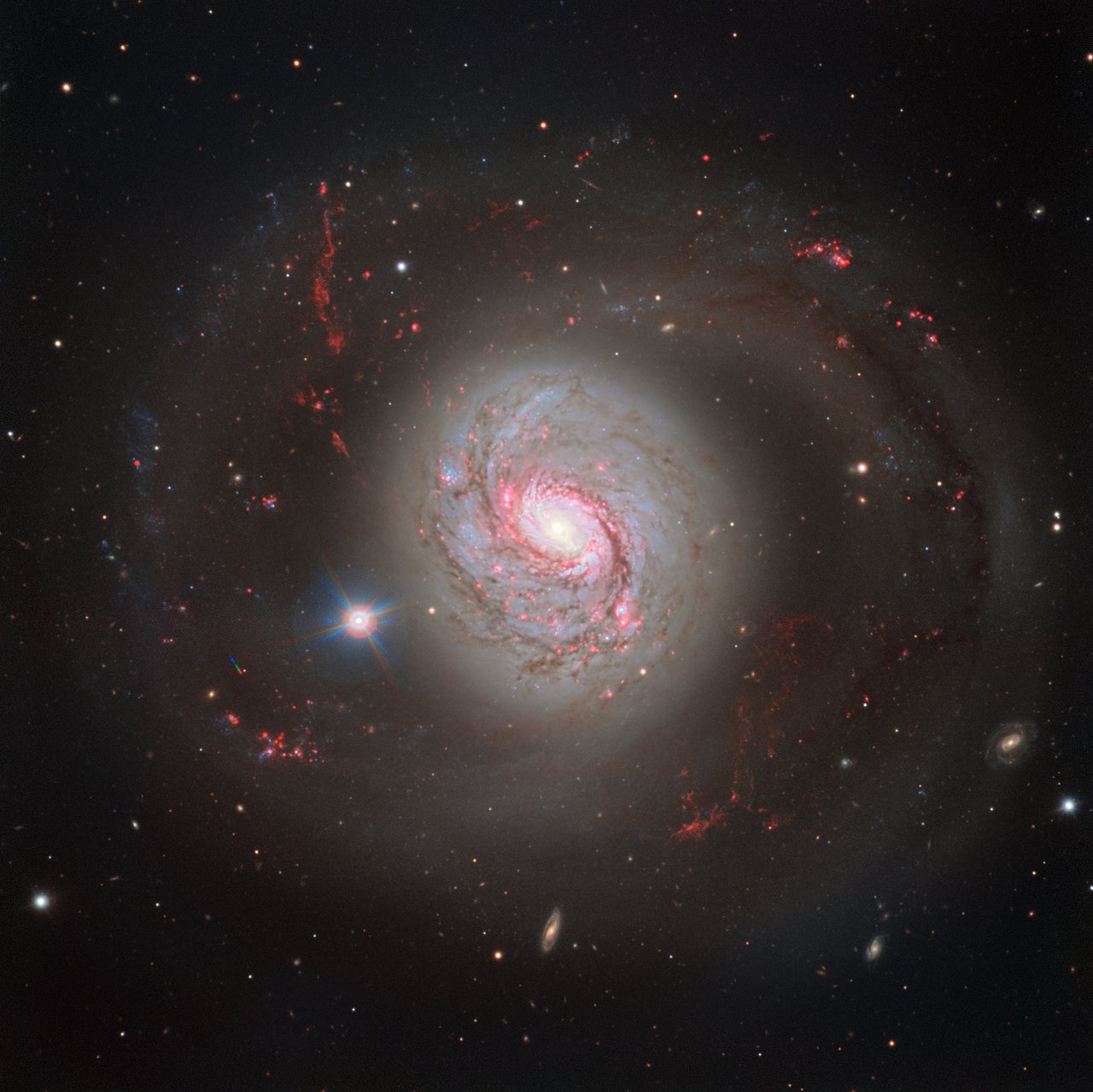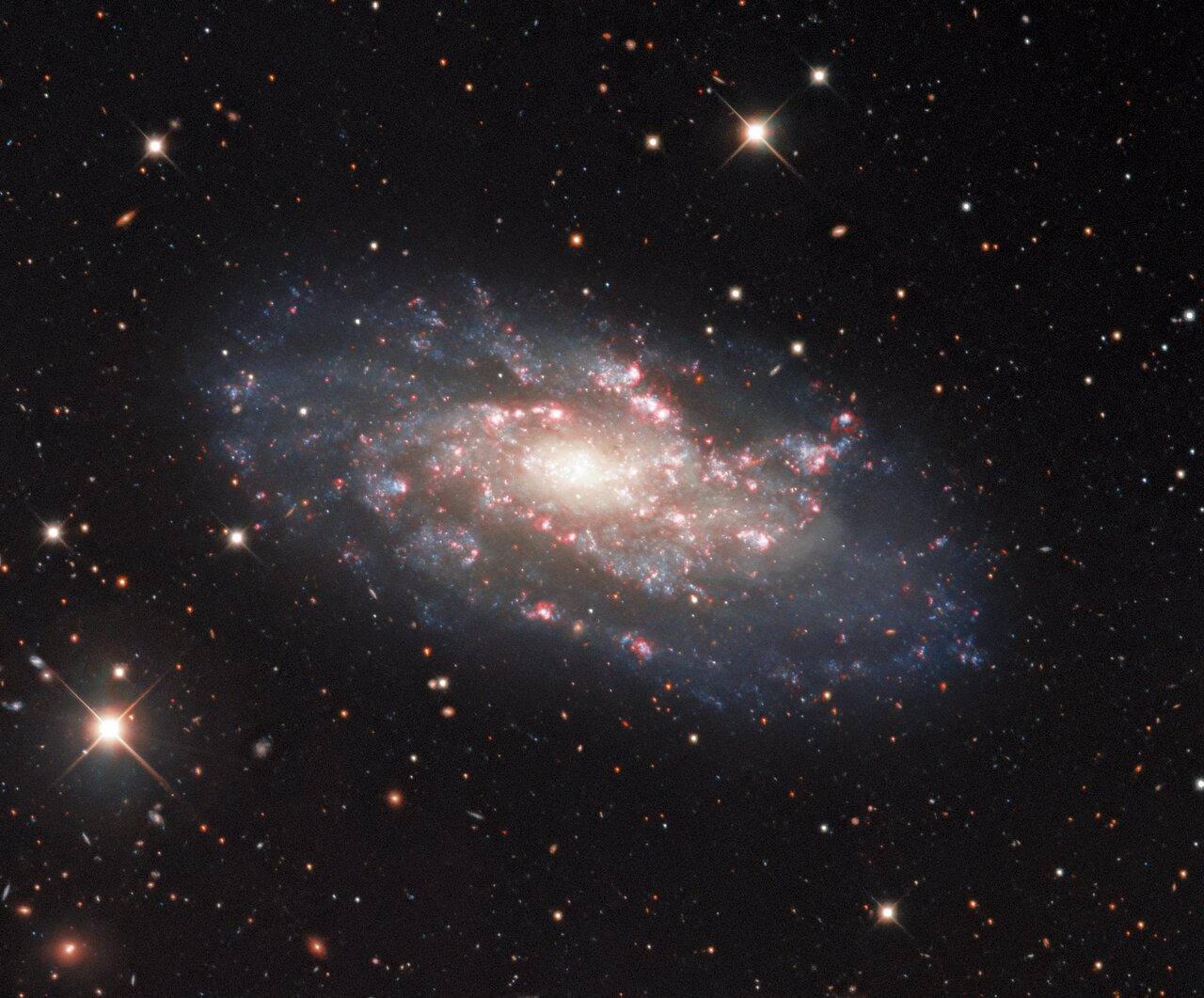Page 1 of 2
Found Images: 2021 April
Posted: Thu Apr 01, 2021 4:22 pm
by bystander
Have you seen a great image or video somewhere that you think would make a great APOD? Nominate it for APOD! Please post as much information here as you have about the image/video with a link to any source(s) for it you know of here, and the editors will take a look.
When posting the image itself, please do not post anything larger than a thumbnail here; please honor the copyright holder's copyright.
Please keep hotlinked images under 500K.
Thank you!
<< Previously
Re: Found Images: 2021 April
Posted: Thu Apr 01, 2021 10:19 pm
by starsurfer
vdB4 and NGC 225
https://www.hansonastronomy.com/vdb-4
Copyright: Mark Hanson
Re: Found Images: 2021 April
Posted: Thu Apr 01, 2021 10:22 pm
by starsurfer
Sh2-188
https://www.astrobin.com/f9iw94/
Copyright: Chris Sullivan
Re: Found Images: 2021 April
Posted: Sat Apr 03, 2021 10:37 pm
by starsurfer
Re: Found Images: 2021 April
Posted: Sat Apr 03, 2021 10:39 pm
by starsurfer
Re: Found Images: 2021 April
Posted: Sat Apr 03, 2021 10:41 pm
by starsurfer
ESO: A Watercolour Sky (VLT)
Posted: Mon Apr 05, 2021 2:01 pm
by bystander
A Watercolour Sky
ESO Picture of the Week | 2021 Apr 05
The
Atacama Desert in Chile is one of the darkest and most peaceful astronomical sites on Earth — and has, as a result, proven to be the perfect location for ESO’s
]various observatories and powerful instruments.
This view shows ESO’s
Paranal Observatory, home to the behemoth Very Large Telescope (
VLT). The constituent telescopes of the VLT can be seen standing sentinel beneath a star-studded sky featuring the glittering arch of our Galaxy, and the glowing
Magellanic Clouds (left). As this image demonstrates, the sky over Paranal isn’t completely dark; after sunset, the beauty of the Universe is overshadowed by that of Earth’s own atmosphere, which glows in multiple hues and paints the sky like a watercolour. The playful brushstrokes of the faraway
emission nebulae that adorn the
Milky Way and the constellation of
Orion (
The Hunter) in the upper centre of the frame, are joined by the soft swaths of green, yellow, red, and orange lying close to the horizon.
This colourful palette is
airglow — atmospheric radiance caused by chemical processes that occur up to about a few hundred kilometres above ground. Just after the Sun has set in the west (right), its strong light also reflects from specks of rock and ice sitting between it and us,
causing them to glimmer and show up as a diffuse white ray (lower centre).
ESA: Spiral Snapshot (Messier 61)
Posted: Mon Apr 05, 2021 2:13 pm
by bystander
Spiral Snapshot
ESA Hubble Picture of the Week | 2021 Apr 05
The luminous heart of the galaxy
M61 dominates this image, framed by its winding
spiral arms threaded with dark tendrils of dust. As well as the usual bright bands of stars, the spiral arms of
M61 are studded with ruby-red patches of light. Tell-tale signs of recent
star formation, these glowing regions lead to M61’s classification as a
starburst galaxy.
Though the gleaming spiral of this galaxy makes for a spectacular sight, one of the most interesting features of M61 lurks unseen at the centre of this image. As well as widespread pockets of star formation, M61 hosts a
supermassive black hole more than 5 million times as massive as the Sun.
M61 appears almost face-on, making it a
popular subject for astronomical images, even though the galaxy lies more than 52 million light-years from Earth. This particular astronomical image incorporates data from not only Hubble, but also the
FORS camera at the
European Southern Observatory’s
Very Large Telescope, together revealing M61 in unprecedented detail. This striking image is one of many examples of telescope teamwork — astronomers frequently combine data from ground-based and space-based telescopes to learn more about the Universe.
Re: Found Images: 2021 April
Posted: Tue Apr 06, 2021 10:44 pm
by starsurfer
Re: Found Images: 2021 April
Posted: Tue Apr 06, 2021 10:45 pm
by starsurfer
Re: Found Images: 2021 April
Posted: Thu Apr 08, 2021 10:45 pm
by starsurfer
Re: Found Images: 2021 April
Posted: Thu Apr 08, 2021 10:48 pm
by starsurfer
3C 58
http://outters.fr/wp/?p=9040
Copyright: Nicolas Outters
Re: Found Images: 2021 April
Posted: Sat Apr 10, 2021 7:49 pm
by starsurfer
NGC 2541
https://noirlab.edu/public/images/iotw2030a/
Copyright: KPNO/NOIRLab/NSF/AURA
Acknowledgement: PI: M T. Patterson (New Mexico State University)
Processing: Travis Rector (University of Alaska Anchorage), Mahdi Zamani & Davide de Martin
Re: Found Images: 2021 April
Posted: Sun Apr 11, 2021 10:35 pm
by starsurfer
ESO: Milky Way across the Desert
Posted: Mon Apr 12, 2021 1:12 pm
by bystander
Milky Way across the Desert
ESO Picture of the Week | 2021 Apr 12
Great care is taken to ensure that the site for a new telescope will provide the best possible observing conditions.
This picture of the week was captured in 2019 by ESO photo ambassador
Petr Horálek from the top of
Cerro Armazones, Chile, where the Extremely Large Telescope (
ELT) is being constructed. Situated in the heart of the
Atacama desert, at an altitude of 3046 metres, this high and dry location will be vital to showcase and utilise the ELT’s incredible observational power.
This extraordinary panorama of the Atacama desert frames a sprawling view of our own
Milky Way galaxy, seen with stunning clarity as a result of the minimum light pollution in this remote area. Massive interstellar dust clouds obscure the more distant starlight, leading to the distinctive “mottled” band in the night sky.
ESA: Light Bends from the Beyond (Abell 2813)
Posted: Mon Apr 12, 2021 1:20 pm
by bystander
Light Bends from the Beyond
ESA Hubble Picture of the Week | 2021 Apr 12
This extraordinary image from the NASA/ESA Hubble Space Telescope of the
galaxy cluster Abell 2813 (also known as
ACO 2813) has an almost delicate beauty, which also illustrates the remarkable physics at work within it. The image spectacularly demonstrates the concept of
gravitational lensing.
In amongst the tiny dots, spirals and ovals that are the galaxies that belong to the cluster, there are several distinct crescent shapes. These curved arcs of light are strong examples of a phenomenon known as gravitational lensing. The image was compiled using observations taken with the Hubble Space Telescope’s Advanced Camera for Surveys (
ACS) and Wide Field Camera 3 (
WFC3).
Gravitational lensing occurs when an object’s mass causes light to bend. The curved crescents and s-shapes of light in this image are not curved galaxies, but are light from galaxies that actually lie beyond Abell 2813. The galaxy cluster has so much mass that it acts as a gravitational lens, causing light from more distant galaxies to bend around it. These distortions can appear as many different shapes, such as long lines or arcs.
This very visual evidence that mass causes light to bend has been famously used as a proof of one of the most famous scientific theories: Einstein’s theory of
general relativity.
Re: Found Images: 2021 April
Posted: Mon Apr 12, 2021 10:31 pm
by starsurfer
Patchick 5
https://www.astrobin.com/n7crrt/
Copyright: Boris Chausov
Re: Found Images: 2021 April
Posted: Mon Apr 12, 2021 10:34 pm
by starsurfer
Patchick 6
https://www.astrobin.com/7vef4o/C/
Copyright: Rauno Päivinen
Re: Found Images: 2021 April
Posted: Thu Apr 15, 2021 11:20 am
by starsurfer
NGC 1808
https://www.astrobin.com/wmwk0e/
Copyright: Geoff Smith
Re: Found Images: 2021 April
Posted: Thu Apr 15, 2021 11:22 am
by starsurfer
NGC 1097
https://www.astrobin.com/lzjkdd/
Copyright: Yves Jongen
Re: Found Images: 2021 April
Posted: Thu Apr 15, 2021 11:24 am
by starsurfer
M94
https://www.astrobin.com/vdvuav/
Data: Barry Wilson and Steve Milne
Processing: Barry Wilson
Re: Found Images: 2021 April
Posted: Sun Apr 18, 2021 10:08 pm
by starsurfer
IC 2167
http://www.chart32.de/index.php/component/k2/item/406
Copyright: CHART32
Processing: Bernd Flach-Wilken
Re: Found Images: 2021 April
Posted: Sun Apr 18, 2021 10:10 pm
by starsurfer
ESO: In a Cosmic Wonderland (ALMA)
Posted: Mon Apr 19, 2021 1:15 pm
by bystander
In a Cosmic Wonderland
ESO Picture of the Week | 2021 Apr 19
This panoramic selfie was taken on 9 April 2016 by ESO
Photo Ambassador Petr Horálek. Petr was in the Chilean
Atacama Desert as a member of ESO’s
Fulldome Expedition team, a select group of photographers who captured an array of stunning, ultra-high-definition visuals for use primarily in the ESO
Supernova Planetarium & Visitor Centre.
The landscape looms large around photographer
Petr in this image, making him appear small beneath the striking Chilean sky. He can be seen standing just beneath a column of
zodiacal light — perfect positioning that makes this image appear even more otherworldly.
The wide, round-topped objects visible here are some of the 12-metre antennas comprising the Atacama Large Millimeter/submillimeter Array (
ALMA).
ALMA is the largest ground-based astronomical observatory in the world, and is located on the
Chajnantor Plateau in Chile at an altitude of 5000 metres. A total of 66 antennas make up the array, and can be connected together in different configurations to act as a single telescope, known as an
interferometer. This arrangement enables ALMA to be the most powerful explorer of the Universe in
millimetre and submillimetre light, the kind of light that is produced by cool, distant, ancient phenomena throughout the cosmos, allowing us to explore the birth of stars, the formation of exoplanets, and distant galaxies.
ESA: Galactic Close-Up (NGC 4603)
Posted: Mon Apr 19, 2021 1:30 pm
by bystander
Galactic Close-Up
ESA Hubble Picture of the Week | 2021 Apr 19
This image shows a close-up portrait of the magnificent
spiral galaxy NGC 4603, which lies over 100 million light-years away in the constellation of
Centaurus (
The Centaur). Bright bands of blue young stars make up the arms of this galaxy, which wind lazily outwards from the luminous core. The intricate red-brown filaments threading through the spiral arms are known as dust lanes, and consist of dense clouds of dust which obscure the diffuse starlight from the galaxy.
This galaxy is a
familiar subject for Hubble. In the last years of the twentieth century,
NGC 4063 was keenly and closely watched for signs of a peculiar class of stars known as
Cepheid variables. These stars have a luminosity closely tied to the period with which they darken and brighten, allowing astronomers to accurately measure how far they are from Earth. Distance measurements from Cepheid variables are key to measuring the furthest distances in the Universe, and were one of the factors used by
Georges Lemaître and
Edwin Hubble to show that the
Universe is expanding.







